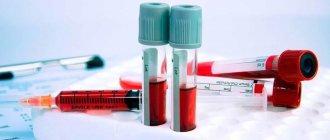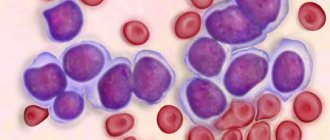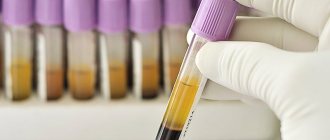Why can’t tests show the presence of allergies in the body? But what if there are still symptoms indicating its presence? As a rule, a rash, itching, and runny nose indicate the presence of a certain allergen in the body. What tests are required? How to prepare for a visit to an allergist? Doctors of the old school were skeptical about allergies: the child would outgrow it. Nowadays, it is becoming more common in adults.
Like really
The first test that needs to be performed is an indicator of the presence of immunoglobulin in the blood.
Why he? Immunoglobulins are specific proteins in the human body. Their task is to fight alien agents. Immunoglobulins of different classes are produced to fight either viruses or bacteria. Thus, immunoglobulin E is important in resisting parasites (helminths and protozoa), as well as in the development of bronchial asthma, allergic rhinitis, neurodermatitis and urticaria. Analysis for its presence can give an accurate and informative answer. On the basis of which the doctor selects and carries out ASIT (allergy-specific immunotherapy) and helps to cure the person.
Methods of specific allergy diagnostics
- Enzyme immunoassay for allergen determination. This study is prescribed to measure the amount of specific immunoglobulins IgE in the patient’s blood. Normally, the total immunoglobulin level is in the range of 20–120 units/ml. In the presence of allergies, this threshold is significantly increased.
- Comprehensive analysis of food allergens - determination of specific IgG4 immunoglobulins, grouped into so-called allergopanels (food groups), optimally selected for cross-reactions.
- RAST test (radioallergosorbent). This test is used to determine the concentration of immunoglobulins IgE and IgG in the blood. With its help, an allergy is detected, but the degree of sensitivity to the foreign protein that causes it is not determined.
- Immunofluorescence analysis for allergens is currently considered the “gold standard” in the diagnosis of allergic pathologies. Using the ImmunoCap method, which is a true quantitative test, the concentration of IgE in the blood serum is assessed and the functional state of the body is determined. When conducting the study, individual allergens (about 280 pieces), panels of food and inhalation allergens, panels for determining allergens of animals, dust mites, grasses, fungi, etc. are used.
- The MAST test allows you to identify changes in the functional activity of phagocytes when they interact with specific agents.
- Immunoblot is a highly specific and highly sensitive reference technique that confirms the diagnosis in case of a positive or indeterminate ELISA result.
- Immunochromatographic analysis is a test for allergens that involves the use of special rapid tests. This method is used when studying serum, plasma or whole blood.
Total immunoglobulin E
The level of total immunoglobulin E (Ig E) is the sum of all immunoglobulins E. The blood of a healthy person contains a very low concentration. The rate may increase with allergic inflammation. The first contact with an allergen does not yet trigger its production in the body. Subsequently, upon repeated contact with the allergen, the immune system starts the process of formation of Ig E. The lifespan of protective proteins is short. Therefore, Ig E immediately enters the tissues after increasing the level in the blood. In the absence of an allergen, the proteins disappear.
Features when conducting a scarification test
• Before scratching, the skin is treated with 70% alcohol. • In children, the test is done on the upper back, in adults - on the shoulder. • Scratches are made on the treated area of the skin at a distance of no more than 5 cm. If the test is not carried out correctly (scratches are displaced), the result will be inaccurate. • Allergens are applied in the form of an extract or solution using a sterile needle or lancet. A separate needle is used for each stimulus. • The patient's hand should be motionless for 15 minutes. This is necessary so that the drops of irritants do not spread and the result becomes reliable. • Based on the reaction on the skin where the scratch was made, a conclusion is made as to how dangerous the substance is for a person in a particular case. Papules, redness, itching, swelling are a negative reaction to the components. • The result will be noticeable within 15 minutes. Upon completion of the measurements, the remaining drops of irritant are removed from the scratches. Up to 20 allergens can be applied in one test.
Attention!
A prerequisite for correct diagnosis is the absence of accompanying complications after the procedure - this depends on the highly qualified personnel, experience, diplomas and certificates confirming the right to perform research.
Results of the diagnostics
Patch testing is carried out during the diagnosis of contact and drug allergies. A patch impregnated with the allergen is applied. The prick test is similar to a prick test: the skin is punctured with a needle containing an allergen. Subcutaneous test is a test during which an injection of an allergen solution is injected under the skin. A skin test is a study that allows you to identify possible dangerous substances individually for the patient: • A positive, sharp result - very bright redness, the appearance of a large papule. • Positive result – redness is clearly visible, papule size 5 mm. • Weak positive result – with slight redness, a barely noticeable papule is formed. • Inaccurate reaction – there is no papule, only redness appears. In this case, a blood test is prescribed for comparison. • Negative result – no reactions on the skin appeared.
What the analysis can show
Total Ig E levels vary depending on a person's age. However, even its normal level according to reference values does not completely exclude allergies. This is possible when reacting to a small amount of substances.
For example, there are known cases of allergies just to birch pollen. To combat pollen, Ig E increases, but the sum of all immunoglobulins of group E does not change significantly. As a result, the analysis indicates the presence of Ig E within the reference values.
Features of skin tests
• Direct allergy tests - are done to diagnose diseases that develop due to hypersensitivity to a certain substance. In this study, allergens and the skin are in close contact: an application, a scarification test, and a prick test are performed. • Indirect skin testing is a testing method designed to detect an allergic irritant. First, the irritant is injected under the skin, then blood is taken from a vein to determine the level of antibodies. Allergens are identified after contact with the skin.
The following groups of allergenic irritants are used: 1) herbal (weeds, meadows); 2) household (presence of dust, chemicals); 3) pollen (seasonal irritant); 4) fungal; 5) animal origin (wool).
• For medications – must be carried out in a laboratory, since the examination uses the patient’s biological material (blood, saliva and others). The results of studies conducted in laboratories are the most informative; they directly depend on the medications taken and the stage of the allergic reaction.
• For urticaria – different types of studies are used: 1) blood test; 2) a smear of the mucous membrane of the nose and throat; 3) analysis of intestinal and stomach microflora; 4) the thyroid gland is examined; 5) identification of the allergen. • Provocative tests - used if information from other methods is insufficient or in case of false (positive or negative) test results. This method helps make a more accurate diagnosis when previous test results and symptoms do not match. A mandatory requirement for the test is that it be carried out in a hospital setting, since there is a high risk of a reaction occurring that requires urgent medical intervention. The allergenic solution is injected into the organ in which the strongest reaction is expected.
Commonly used types of tests: 1) Conjunctival - injected directly into the mucous membrane, a reaction is observed - redness of the eyes, lacrimation. 2) Nasal - injected into the nasal passages, a positive result in the form of difficulty breathing, sneezing, swelling. 3) Inhalation – used using an inhaler, observation is carried out over the bronchi and lungs. Difficulty breathing with whistling, wheezing indicate a positive reaction of the body. 4) Cold - allows you to detect the presence of urticaria by applying ice or cold to the forearm. The appearance of redness and blisters indicates a positive result. 5) Heat urticaria - hot water is applied to the forearm for no more than 10 minutes. 6) Food – the allergen is consumed in food. It is carried out in a hospital setting to provide timely medical care. 7) Exposure - the patient is placed in conditions under which the allergy appeared.
Specific immunoglobulins E
If the level of total Ig E is elevated, it is necessary to find out what caused it. For this purpose, a specific Ig E is selected, aimed at opposing a specific substance. To save time on searching for an allergen, ready-made panels have been created: food panel, inhalation panel, pediatric panel. They contain a complex of specific immunoglobulins to combat the most common allergens.
The medical doctor offers to make an appointment with a dermatologist. A full range of diagnostics and treatment of dermatological diseases in Tula. Tel. for recording.
What is a blood test for allergens?
Determining an allergen by blood is a highly informative, absolutely safe diagnostic technique that is carried out in vitro, that is, it does not require direct human participation. With a single use, this laboratory test allows you to detect the presence of specific antibodies to an unlimited number of allergens in the patient’s serum, plasma or whole blood. In the event that when performing skin allergy tests there is a possibility of developing a severe allergic reaction, such an analysis is the only possible method of diagnosis.
All laboratory tests involving the use of blood are conventionally divided into specific and nonspecific. The second type of research, aimed at identifying general changes in the patient’s immune system, uses a clinical blood test, determination of the level of C-reactive protein, characterization of immunocompetent cells, etc.
Specific diagnosis of allergens includes determining and measuring the level of allergen-specific immunoglobulins IgG/IgG4, which are biomarkers of hypersensitivity to foreign proteins.
What does the result say?
The analysis showed a high level of total Ig E, and there was an allergy with symptoms. But it is impossible to find a causally significant allergen. This is due to the fact that most people with allergies have reactions to several groups of allergens at once. They react to a certain food product if there is a history of reaction to pollen from flowering plants.
For example, a patient with an allergy to birch pollen will also show symptoms to plant foods with a similar protein structure. The reaction will manifest itself on apples, peaches, kiwi, peanuts and hazelnuts. At the same time, having passed the food panel, the result will not show an allergy to the specified food products, although the symptoms are obvious. And the reason lies in the very essence of the allergy - its cross-reaction during the production of special Ig E to birch pollen proteins.
Preparation for the procedure
• Tests to determine the reaction are carried out while the allergy subsides. • During the week before the test, if possible, eliminate sources that can cause allergies. • Cancel hormonal and antihistamines two weeks before the test. • Following a hypoallergenic diet, if it was prescribed earlier. Testing performed on an empty stomach may be inaccurate. • To take the test, it is important to refrain from eating 8 hours before the test. • If on the eve of the test you become ill with a viral or infectious disease, the test will have to be postponed.
The patient must strictly follow the doctor's recommendations. Violation of the rules entails false negative or positive results of skin tests. If the result is indeterminate, a repeat study will be required; allergens must be reintroduced, which entails discomfort for the patient.
What to do?
To get reliable results from an immunoglobulin E test, it is worth preparing for blood donation correctly.
- Determination of Ig E is carried out only at the peak of an exacerbation of the disease in the presence of obvious symptoms: rash and burning, nasal congestion, runny nose. Otherwise, the analysis will not show anything.
- On the eve of the test, it is necessary to keep a food diary, taking into account the presence of symptoms. This will help the allergist make more accurate conclusions and prescribe the appropriate panel.
- To confirm the allergic nature of the inflammation, in some cases it is worth taking an analysis for the cationic protein of eosinophils.
Carrying out skin tests
An examination method that helps identify types of allergens and types of reactions: • when the skin comes into contact with an allergen, blood cells are affected; • local allergic effect appears due to the penetration of the irritant into wounds on the skin with the release of serotonin and histamine; • after applying the irritant, the skin becomes red, itching, papules, and swelling appear; • Based on the results of the study, doctors determine a possible irritant, further contact with which must be excluded.
To test allergies, a solution and an allergen extract are used. Glycerin and histamine are used in testing. Irritants are applied to the skin using a needle, lancet or tampon applicator.
Indications for performing the test are:
• an attack of hay fever; • seasonal allergies; • allergic skin rashes; • inflammation of the bronchi; • conjunctivitis with allergic symptoms; • sensitivity to lactose and gluten; • Quincke's edema; • urgency of identifying the irritant; • genetic predisposition; • runny nose with allergic manifestations; • the patient has shortness of breath, nasal congestion, lacrimation, swelling of the mucous membrane; • work in hazardous production.
Contraindications for the test are:
• lung diseases of infectious origin; • AIDS; • risk of anaphylactic shock; • lactation; • asthma at the stage of improvement; • pregnancy; • malignant tumor; • intensification of an allergic attack; • skin damage; • mental disorders; • children under 2 years old; • patients over 60 years of age; • urgent need to take medications. Indications or contraindications are reviewed by the doctor, and he gives an opinion on permission to conduct the test.
Attention!
If there are absolute contraindications (pregnancy, sore throat, pneumonia, acute allergies, etc.), the test is prohibited!
Wait until you have fully recovered and the baby is born (if you are pregnant) and only then get examined. In some cases, it is allowed to use a gentle method of testing blood - conducting a highly sensitive express test for the amount of antibodies present.
Diagnosis methods
The advantages of the methods are quick results and the ability to detect a large number of allergy sources. In order to determine what caused the allergy, doctors conduct special types of tests:
• scarification test - the irritant is applied to the forearm, scratches are made using a needle or lancet; • patch test – one of the safest methods, an allergen solution is applied to a tampon in the form of a solution and applied to the body; • prick test - the irritant is applied to the skin using a special needle, a puncture is made on the skin at the site of the test; • intradermal test – is more accurate; the allergenic extract is administered subcutaneously through a syringe.
What manifestations are most common in children?
First of all, these are skin manifestations, especially in the first year of life. Pediatricians often mistakenly diagnose diathesis instead of food allergy, and, as a result, atopic dermatitis develops. It differs from adult atopic dermatitis and is characterized by acute manifestations: weeping rashes on the face, hands, back of the head, and folds of the neck.
In adults, these are most often dry dermatoses, which are typically localized in the area of the elbows and knees, with a more severe course spreading to the surface of the skin of the upper and lower extremities, torso, less often the neck and eyelids, almost never affecting the skin of the rest of the face.
Other equally important manifestations of allergies are disturbances in the gastrointestinal tract in response to the introduction of complementary foods or the consumption of certain foods by a nursing mother. Colic, disturbances in stool and digestion of food, as a manifestation of allergies, are very easily disguised as intestinal diseases, including poisoning.
Respiratory allergies in children manifest themselves in the same way as in adults - nasal congestion, clear mucus from the nose, sneezing, coughing, and sometimes redness and itching of the conjunctiva. It should be remembered that these signs of allergies can occur not only with allergies to inhaled allergens, that is, those that we can inhale and encounter in the air. Often food triggers these symptoms.
Diagnosing allergies in children, like other diseases, has some difficulties associated with age-related characteristics. Most often, the main problem is drawing blood. It can be quite difficult to take venous blood because children are afraid and do not allow the needle to be inserted correctly to draw blood. There is also a psychological factor on the part of the parents, because the sight of a newborn screaming next to a standing nurse holding a needle is a rather heartbreaking picture.
Fortunately for us, modern molecular allergy diagnostics makes it possible to determine or exclude allergies using capillary blood, and one drop is enough to assess 112 allergy indicators using the ImmunoCAP ISAC method, which is not available in all laboratories, but is available in the CITILAB laboratory.
Every year the percentage of children born with allergies increases. According to official data for 2021, the number of children suffering from one or another allergic diseases has reached 30%. According to scientists, by 2021 this figure could reach 50%.
There is still no unified theory of the occurrence of allergies. We know that this disease is genetically determined, which is why, like all other genetic diseases, we do not know how to cure this category of pathology, but can only control it. The probability of having a sick child if both parents suffer from allergies is 75%, one parent is 50%, and even if both parents do not suffer from allergic diseases, there is still a 25% chance that the baby will be sick. In addition to heredity, causes include radiation exposure, environmental and nutritional factors, the accumulation of genetic mutations, and even evolution.
What are the main causes of allergies in children?
The main manifestations of allergies in children are skin rashes and itching (signs of atopic dermatitis), which are most often caused by food allergens. Further, the disease can follow the so-called atopic march, which consists of the transformation of atopic dermatitis into allergic rhinitis/conjunctivitis, and then into bronchial asthma. Therefore, the allergic process cannot be left without medical supervision, and this problem must be dealt with.
To correctly select drug therapy and diet, it is necessary to conduct a high-quality diagnosis of the disease, which can be performed at CITILAB. It should be noted that ISAC testing can be performed using capillary blood. And this is important for our youngest patients, from whom it is quite difficult to take venous blood. Blood collection points are equipped with all the necessary materials.










